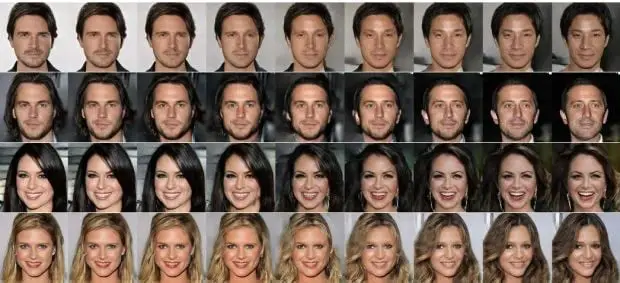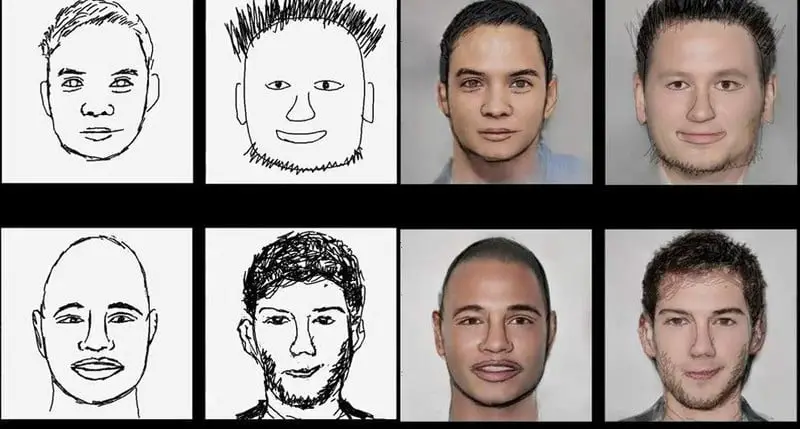Developed by employees of the University of Chinese Academy of Sciences (UCAS) in Hong Kong, the DeepFace Drawing system can turn “rough” sketches into high-quality photos of people.
What is DeepFace Drawing, how can it be used?
Artificial intelligence generates photos from line drawings. That may sound creepy, but Deep Face Drawing could have some sensible uses.
In the future, artificial intelligence could help turn simple line drawings, for example of phantom images in the police field, into photo-realistic facial images.
So far, the sketches had to be very good so that the technology was able to create a picture that was even remotely usable – it was said to be a great challenge even for professional draftsmen.
The artificial intelligence on which this technology is based, on the other hand, is supposed to be able to orient itself on the lines, but rather to understand it as a point of reference and inspiration.

The software obviously does not need details such as lip shape or eyelids, but uses the appropriate databases to determine the probability.
The left and right eyes, nose area, mouth area, face shape and type of hair are differentiated and considered separately. For each zone, a variant is generated from the sketch, which is then assembled into a 512×512 pixel image.
The research is funded by Adobe
Initially, 17,000 drawings and the associated photos of the people drawn were available. So far, it is apparently mainly Caucasian and South American faces that appear here. This could have to do with the data source – or with the different complexity of face shapes.
The researchers do not provide more precise information on this. In the future, technology will continue to learn based on these principles.
The research is funded by Adobe, among others. Artificial intelligence in image recognition is a central field that many companies from the graphics and creative environment are currently researching.
The researchers explain exactly what the technology can do, where the limits are and how the images are calculated in a detailed paper.
And in the video below, you can take a closer look at the results and how to get there.





